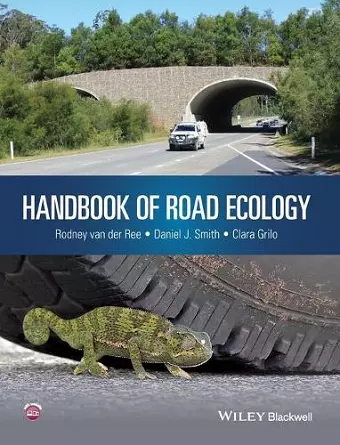Handbook of Road Ecology
Daniel J Smith author Rodney van der Ree author Clara Grilo author
Format:Hardback
Publisher:John Wiley and Sons Ltd
Published:5th Jun '15
Should be back in stock very soon

Winner of the IENE Project Award 2016.
This authoritative volume brings together some of the world’s leading researchers, academics, practitioners and transportation agency personnel to present the current status of the ecological sustainability of the linear infrastructure – primarily road, rail and utility easements – that dissect and fragment landscapes globally. It outlines the potential impacts, demonstrates how this infrastructure is being improved, and how broad ecological principles are applied to mitigate the impact of road networks on wildlife.
Research and monitoring is an important aspect of road ecology, encompassing all phases of a transportation project. This book covers research and monitoring to span the entire project continuum – starting with planning and design, through construction and into maintenance and management. It focuses on impacts and solutions for species groups and specific regions, with particular emphasis on the unique challenges facing Asia, South America and Africa.
Other key features:
- Contributions from authors originating from over 25 countries, including from all continents
- Each chapter summarizes important lessons, and includes lists of further reading and thoroughly up to date references
- Highlights principles that address key points relevant to all phases in all road projects
- Explains best-practices based on a number of successful international case studies
- Chapters are "stand-alone", but they also build upon and complement each other; extensive cross-referencing directs the reader to relevant material elsewhere in the book
Handbook of Road Ecology offers a comprehensive summary of approximately 30 years of global efforts to quantify the impacts of roads and traffic and implement effective mitigation. As such, it is essential reading for those involved in the planning, design, assessment and construction of new roads; the management and maintenance of existing roads; and the modifying or retrofitting of existing roads and problem locations. This handbook is an accessible resource for both developed and developing countries, including government transportation agencies, Government environmental/conservation agencies, NGOs, and road funding and donor organisations.
“In conclusion, the book provides a very important contribution to the understanding of the effects of linear infrastructures on wildlife. It is 'reader friendly' and practice driven, and I'm sure it will generate both further research and collaboration in the field, so that the highest beneficiary will be the natural vegetation and fauna.” (Bulletin of the Eurasian Dry Grassland Group, 1 November 2015)
“Authors focused and wrote concisely, which means the contents are readily digestible and consequently easy to use for students in both academic and more technical and practical disciplines… Another major strength of the Handbook of Road Ecology is its comprehensive international coverage. Each of the three editors is from a different continent, and the other contributors cover an impressively diverse range of countries, developed and developing, and cultures. This means that in addition to providing a comprehensive compendium for people seeking information on ecologically sustainable road construction and planning, the volume is also valuable for learning from approaches and solutions applied in different regions…The cross-referencing of chapters is helpful and enables readers to find other chapters relevant to a particular topic with ease. The editors have clearly put considerable effort into ensuring the book is concise and easy to use for all those who are interested in the challenges of ecologically sustainable construction and planning of roads. Each chapter begins with a succinct summary and bullet points and ends with suggestions for further reading, which makes it easy to use as a reference work from which relevant information can be located easily and quickly. The book is richly illustrated with colored photographs and figures." Conservation Biology, 00: 0 (2017)
ISBN: 9781118568187
Dimensions: 254mm x 196mm x 31mm
Weight: 1352g
560 pages